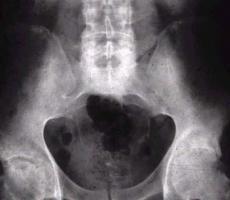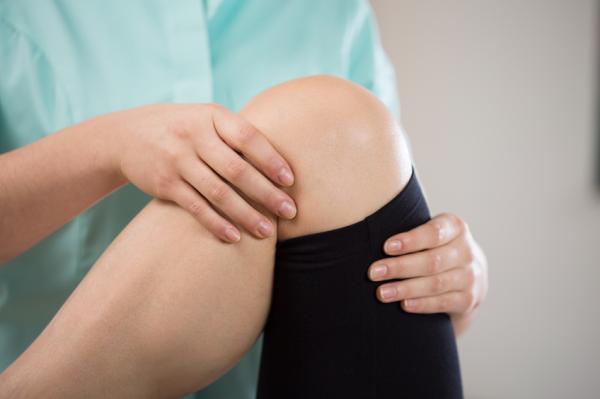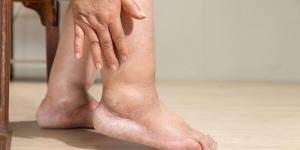Subchondral Sclerosis - Symptoms and Treatment


Subchondral sclerosis is a disease that affects the bones and specifically the joints, of people who have osteoarthritis. Subcrondal sclerosis causes joint pain and numbness due to increased bone density and mass, producing a thin layer of bone beneath the cartilage in the joints. This disease is chronic and painful, but it is easy to detect and includes several different treatments. At oneHOWTO we'll explain a bit more about the symptoms and treatment of subchondral sclerosis.
Subchondral sclerosis - causes
There are three main ways of contracting subchondral sclerosis and there are varying degrees of prevention:
Genetic factors
Although it is difficult to tell or predict from birth, studies claim that there is a genetic predisposition to contracting osteoarthritis and subchondral sclerosis. As subchondral sclerosis derives from compressed joints and often malformation of joints, this can happen at the developmental stage. While it might be occurring throughout your entire life, in barely recognizable ways, it is often not until later that it is diagnosed. Women are more likely to get subchondral sclerosis more than men, with about 18% of women over 60 suffering from the condition. However, men are more likely to develop subchondral sclerosis under the age of 50.
Excess weight and obesity
One of the leading causes of subchondral sclerosis is obesity. As would happen with any vehicle carrying a load, the human body is put under a lot of strain if the person has a high BMI (body mass index). This means the extra weight people can carry on their bodies exerts pressure on the joints. This weight degrades the synovial fluid between the joints and causes more friction between bones. This friction leads to inflammation, in turn leading to osteoarthritis. Under x-ray, people who develop subchondral sclerosis will see increased bone formation round the joint. This is exacerbated by excess weight and a sedentary life. Also, obesity has secondary factors which may contribute to subchondral sclerosis. Toxins from overeating and a weakened immune system can both be contributing factors.
Physical exercise and injury
While everyone is encouraged to exercise as best they can, some exercise can lead to subchondral sclerosis. Going on long runs where joints rub together or weight lifting where a lot of heavy strain is put onto joints can both contribute to its development. Over exercise can result in a rapid degradation in bones and ligaments. An injury sustained either during exercise or due to some other complication, can result in osteoarthritis. It could be not giving the joints enough time to heal, especially if further exercise is carried out too soon after an injury. This is why many sportspeople and athletes develop osteoarthritis later in life.

Subchondral sclerosis symptoms
While osteoarthritis is a term which encapsulates a wide range of joint disease, subchondral sclerosis is something a little more specific. The "itis" in osteoarthritis means inflammation and inflammation of the joints can happen before subchondral sclerosis sets in. When the acetabular cartilage and the femoral head begin to diminish, it produces subchondral sclerosis, causing the bones to react to the lack of hyaline cartilage. At about 55 years of age, ulcerations and erosions can be observed in the subchondral bone without its cartilaginous lining. This can happen even without any known pathological alteration and simply due to normal wear and tear (aging joints). Another symptom of subchondral sclerosis is a decrease in height due to degenerative changes, that results in joint space narrowing. In X-rays, this appears as a sharp white line (increased bone density) in the weight bearing joints, such as the hip socket and the femoral head.
Unfortunately, subchondral sclerosis can be very hard to detect, especially in younger patients. While many may develop it after developing osteoarthritis, younger people who contract the condition my have it and not be aware. They might only detect it after pain or limited mobility in their joints presents. It might only be confirmed via and X-ray, so if you are feeling any limited mobility or similar pain, you should seek a physician's advice.

External signs of subchondral sclerosis
Subchondral sclerosis can be detected with radiology, i.e. it's visible in X-rays of the joints and is the result of a reactive bone response, resulting in increased bone density of the underlying articular cartilage bone (that's underneath the joint).
It's typical of osteoarthritis, but can also occur in other diseases. Osteoarthritis is a degenerative disease which affects most of the mobile joints (hip, spine, hand, knee) and is produced by alterations in the cartilage and subchondral bone and is the result of several diseases with similar symptoms due to the wear and tear of aging.

Treatment for subchondral sclerosis
Treatment for subchondral sclerosis can be varied depending on the affected area and intensity of the disease. Below we list some treatment options, but remember to always consult a specialist who will prescribe the appropriate treatment:
- Physical exercises such as swimming and using an exercise bike
- Weight reduction
- Physiotherapy
- Electrotherapy
- Movement therapy
- Orthotics
- Thermotherapy
- Acupuncture
- Ozone therapy
- Supplement your diet with glucosamine, condroiton and methylsulfonylmethane
- Do strengthening exercises and stretch the muscles that support the back
- Avoid bad posture and improper body mechanics
While there is no reversing the effects of osteoarthritis or subchondral sclerosis, there are treatments which can help. These include non-steroid anti-inflammaotry drugs (NSAIDs), particularly in advanced stages of the condition. They work both as an anti-infñlammatory as well as an analgesic (painkiller). However, side effects of NSAIDs can be painful and even life threatening in acute cases. Diclofenac is purported to be one of the most effective in treatment of subchondral sclerosis.
As identified in the list above, the best treatment of subchondral sclerosis is management. This involves moderate exercise which will keep the joints supple without causing more damage to them. This is a hard balance to strike and can often result in a difficult trial and error process. If subchondral sclerosis is caused by obesity, then weight loss is advised. This will involve a change to diet as exercise alone might be difficult thanks to limited mobility.
This article is merely informative, oneHOWTO does not have the authority to prescribe any medical treatments or create a diagnosis. We invite you to visit your doctor if you have any type of condition or pain.
If you want to read similar articles to Subchondral Sclerosis - Symptoms and Treatment, we recommend you visit our Diseases & secondary effects category.
Tips
- If the pain is very acute, your best option may be surgery to replace the joints. This will eliminate the symptoms.









